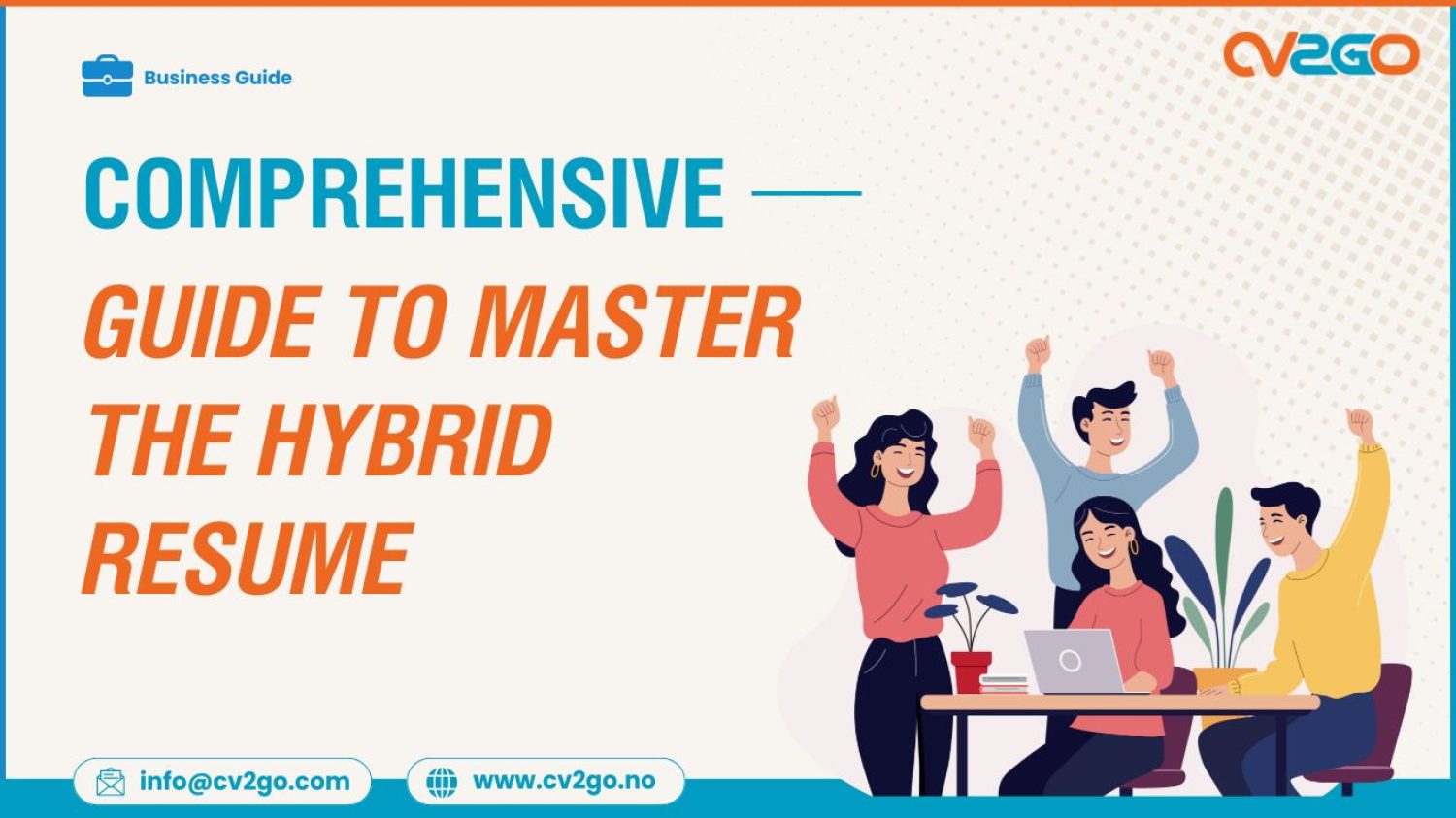In today’s competitive job market, the hybrid resume is a game-changer. It showcases your skills, achievements, and career history in a recruiter-friendly format while optimizing for modern resume screening tools, making it a top choice for job seekers in 2025.
This guide will help you understand what a hybrid resume is, when to use it, and how to create one that ensures you stand out.
What is a Hybrid Resume?
A hybrid resume combines the key features of chronological and functional resumes to offer the best of both worlds:
- Chronological Resumes: Focus on listing your work history in reverse order, emphasizing career progression and job titles. These work well for linear career paths, such as moving from Marketing Intern to Marketing Specialist and finally Marketing Manager.
- Functional Resumes: Highlight your skills and achievements instead of focusing on job titles. For example: Data Visualization Expertise:
- Created dashboards in Tableau that improved reporting efficiency by 30%.
- Designed custom visualizations for monthly executive reviews.
The hybrid resume integrates these approaches by starting with a skills section that emphasizes your core competencies and achievements, followed by a reverse-chronological work history. This structure ensures recruiters see your strengths immediately while still providing context through your career timeline.
When to Use a Hybrid Resume
A hybrid resume is versatile and effective for most situations, but it’s particularly useful in these cases:
1. When ATS Software Is Involved
Many employers use Applicant Tracking Systems (ATS) to filter resumes. By including a dedicated skills section, you can ensure the keywords from the job description are prominently featured, improving your chances of passing the ATS screening.
2. When You Have Limited Work Experience
If you’re a recent graduate or switching careers, leading with your skills allows you to highlight your qualifications and achievements, even if your job history is sparse or unrelated.
3. When Your Career Path Isn’t Linear
For applicants with career gaps, industry shifts, or unconventional roles, a hybrid resume helps recruiters focus on your relevant skills and experience rather than your career timeline.
4. When Non-Professional Attributes Are Relevant
Skills gained outside of traditional jobs, such as volunteer work, personal projects, or hobbies, can shine in the skills section of a hybrid resume.
How to Write a Hybrid Resume with Examples
Building a hybrid resume involves including several key components:
1. Contact Information
Ensure your name and contact details are easy to find at the top:
- Phone Number
- Professional Email Address
- Portfolio or LinkedIn URL (if relevant)
2. Executive Summary
Craft a concise summary of your professional achievements and skills, tailored to the job you’re applying for. Limit this to 4-5 sentences.
Example:
“CompTIA-certified IT Specialist with 3+ years of experience in system diagnostics and network optimization. Expertise in hardware repairs and cloud migration strategies, with a proven record of reducing operational downtime by 20%. Seeking to leverage technical skills to drive efficiency at XYZ Corporation.”
3. Skills Section
Highlight 6-8 skills relevant to the role, emphasizing measurable achievements.
Example:
- Data Analysis: Reduced processing time by 25% through automation in Python.
- Customer Relationship Management: Improved client retention rates by 15% with personalized follow-ups.
- Team Leadership: Led a team of five developers, completing projects 10% ahead of schedule.
4. Work History
List your work history in reverse chronological order, including bullet points with quantified accomplishments.
Example: Marketing Analyst | ABC Company | Jan 2020 – Dec 2023
- Implemented targeted campaigns that boosted sales by 18%.
- Analyzed consumer data, reducing churn by 10%.
- Developed dashboards in Power BI to monitor KPIs in real-time.
5. Education
Include your educational qualifications in reverse order, starting with the most recent degree. Mention relevant coursework or honors if applicable.
Example: Bachelor of Science in Computer Science | University of California | May 2022
- Relevant Coursework: Data Structures, Machine Learning, Software Engineering
Customizing a Hybrid Resume for Specific Roles
To make your hybrid resume stand out:
- Incorporate Keywords: Use exact phrases from the job description in your skills section.
- Showcase Industry-Specific Expertise: For example, a healthcare data analyst should emphasize experience with medical databases and compliance standards.
- Highlight Relevant Projects: Feature roles and achievements that align closely with the job requirements.
Best Practices for Hybrid Resumes
1. Keep It Concise
Aim for one page. Use bullet points and short statements to make your resume easy to skim.
2. Focus on Readability
Use professional fonts like Arial or Calibri. Ensure ample white space for clarity and avoid overly decorative designs that could confuse ATS systems.
3. Quantify Achievements
Where possible, include metrics to demonstrate your impact. For example, “Increased efficiency by 15%” is more compelling than “Improved efficiency.”
4. Proofread
Check for typos, grammar errors, and formatting inconsistencies. Have a trusted friend or professional review your resume for additional input.
Why a Hybrid Resume is Your Best Bet
Whether you’re a recent graduate, a career changer, or an experienced professional, a hybrid resume offers unparalleled flexibility and impact. By combining your skills with a concise work history, you’ll appeal to both ATS systems and human recruiters. Start creating your hybrid resume today to take the next confident step in your career journey!




